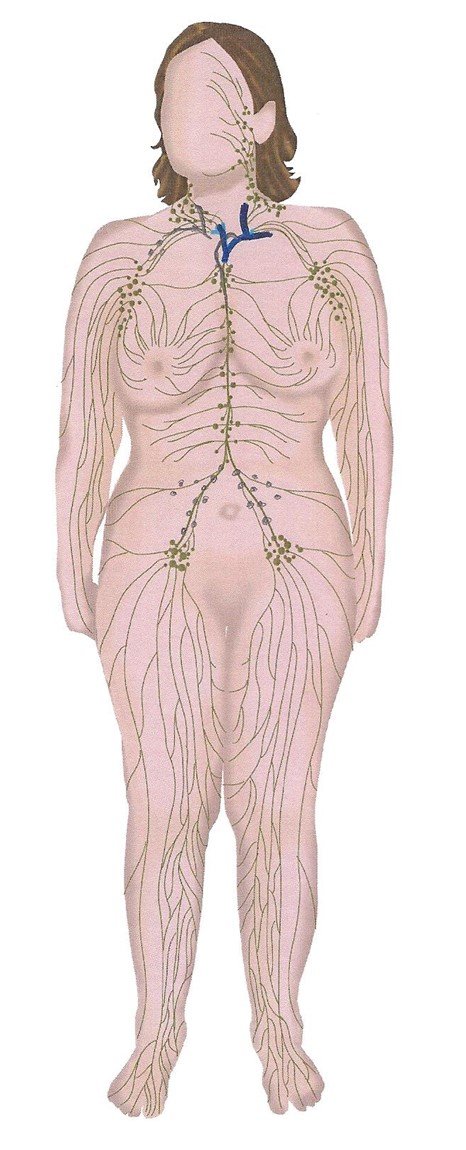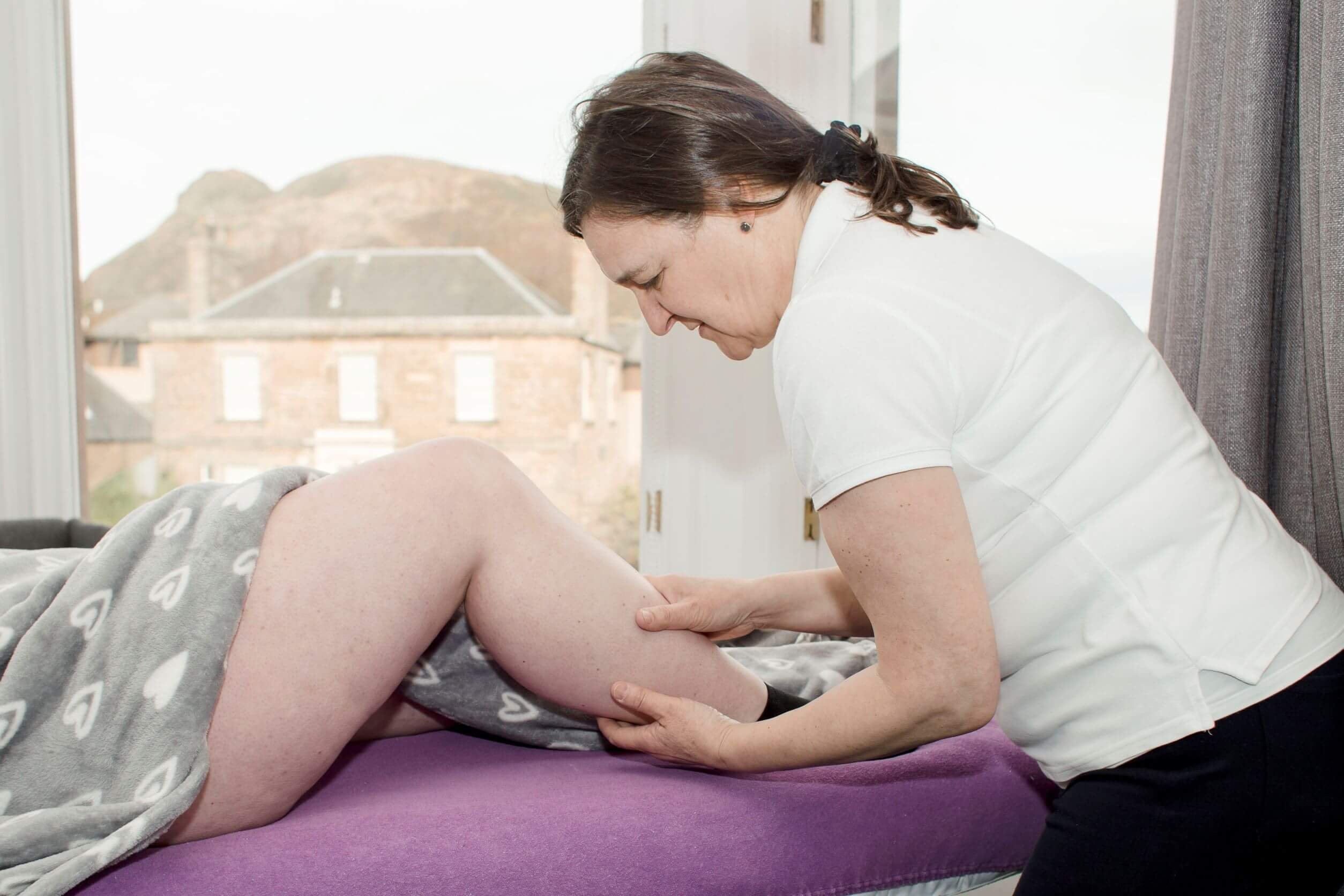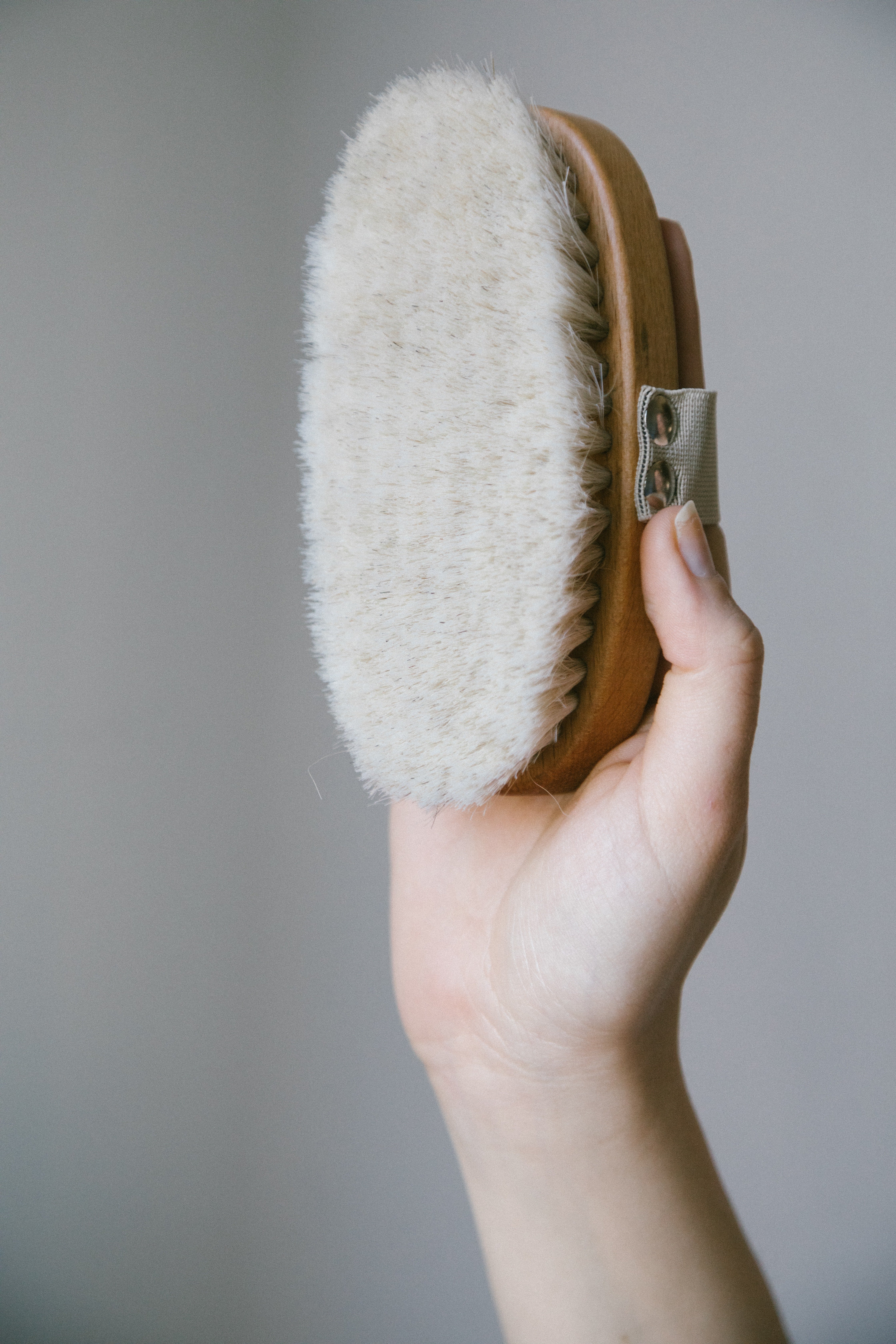Lymphatics and Lipoedema

The lymphatic system
Our lymphatic system keeps our body healthy by draining fluid from the tissues, and deals with inflammation and infection. It also absorbs fats that we eat and transports them around the body. The lymphatic system is a network of lymph channels throughout the body, and more than 600 lymph nodes (sometimes called ‘glands’), that filter the fluid and store blood cells that ‘fight’ infections.
Some research suggests that the lymphatic system is not affected by lipoedema. Other studies have shown that changes can develop in the lymphatics in someone with lipoedema. We know that:
- Lymphatic flow is slower when we get older or when we are less active
- Lymphatics may find it more difficult to drain fluid around areas of increased fat.
One study by Grigordiadis et al (2022) has shown that around 27% of women with lipoedema had some additional swelling (oedema) linked to increased fluid. This can cause symptoms such as heavy legs, increased swelling during the day that goes down at night, areas of hardness or fibrosis in the enlarged tissues, and, for some people, broken or ulcerated skin. Some medications, such as steroids or certain blood pressure pills, can also cause increased swelling.
Grigoriadis D, Sackey E, Riches K, van Zanten M, Brice G, England R, et al. (2022) Investigation of clinical characteristics and genome associations in the ‘UK Lipoedema’ cohort. PLoS ONE 17(10): e0274867. https://doi.org/10.1371/journal.pone.0274867
Is your lymphatic system healthy and efficient?
Some signs it might not be:
- Feelings of heaviness in the limbs, particularly by the end of the day, in hot weather, or after long periods of sitting or standing
- Increased swelling such as in the feet, legs, arms, and hands
- Changes to the skin such as a rash, redness, firmness, scaly or broken skin
- Cellulitis, a type of infection that causes skin redness, raised temperature and ‘flu-like symptoms.


What can I do to keep my lymphatics healthy?
- Keep your skin clean and in good condition, moisturizing and protecting from any damage such as cuts, insect bites or sun burn
- Keep moving, such as walking, gardening, stretching, swimming, yoga, Tai Chi
- Make healthy food choices, eating fruits, vegetables, legumes and pulses, nuts, whole grains, fish, and unsaturated fats such as olive oil, moderate amounts of dairy such as cheese and yogurt. Limit the amount of meat, saturated fats, ultra-processed foods and sugary foods that you eat.
- Consider wearing compression garments during the day if you do have swelling
- Consider doing daily self-lymphatic drainage, or skin brushing
- Get advice from a lymphoedema specialist or manual lymphatic drainage therapist as some people benefit from a course of Manual Lymphatic Drainage
- For more information visit MLD UK website here MLD UK

What is manual lymphatic drainage?
MLD is a gentle but very specific type of massage that improves the transport of fluid and waste in the body through the lymphatic system. The lymphatic system drains excess fluid and waste products from the tissues, deals with inflammation and infection, and transports fats around the body. A manual lymphatic drainage therapist uses light and rhythmic hand movements on the skin, stimulating lymph nodes and the numerous lymphatic channels. Usually, MLD also incorporates breathing movements.

Self-lymphatic drainage and skin brushing
Self-lymphatic care and skin brushing can be done at home. For more information, download our guide!
